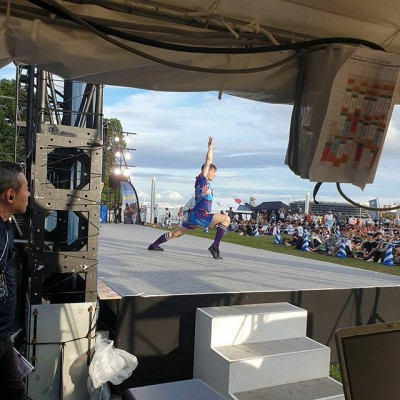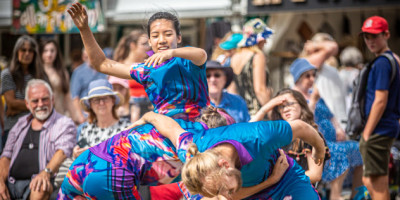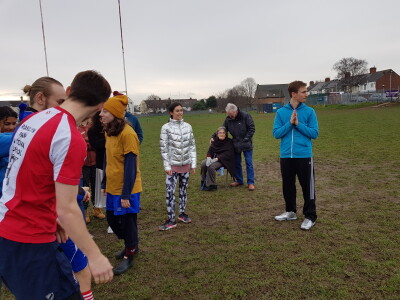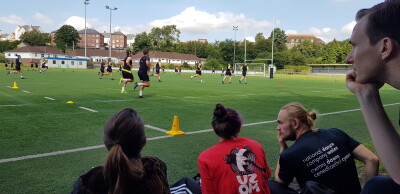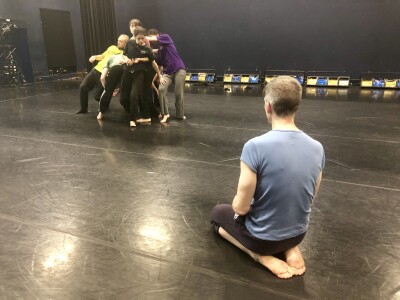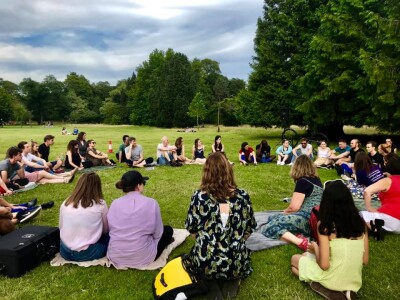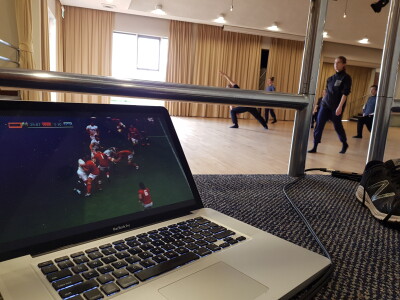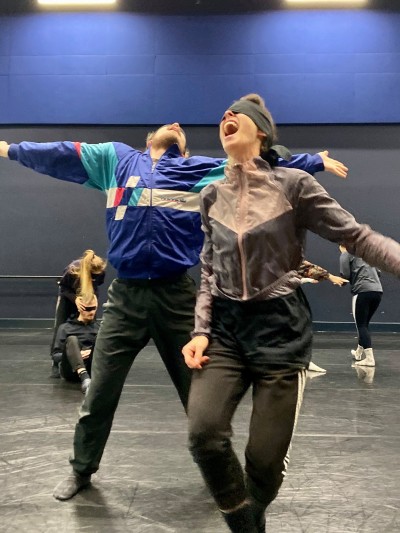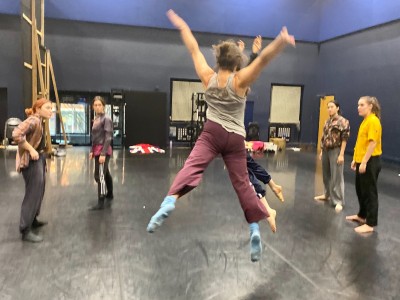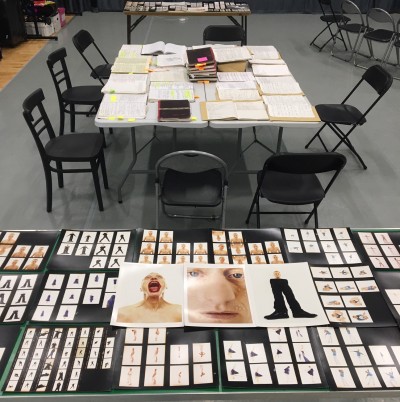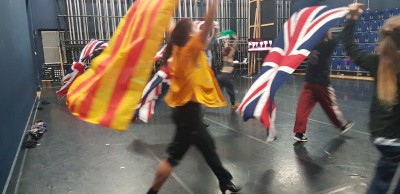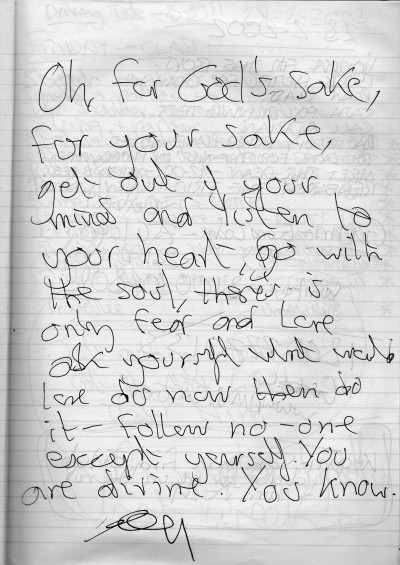It wasn’t ideal that Ireland (first in the Rugby World Cup rankings) should be beaten by what’s currently a second tier rugby nation – Japan. But the hosts played a beautiful game and deserved the win on the day. The prime minister of Japan, Shinzo Abe, congratulated the country’s team on Twitter by remarking that the win was made possible “ by teamwork“. It’s that building of team, a sports team in this case, but also a community of support (as is happening now in Japan, a country where rugby isn’t the main sport but where people are committing to getting behind the sport) that animates Annwyl i mi.
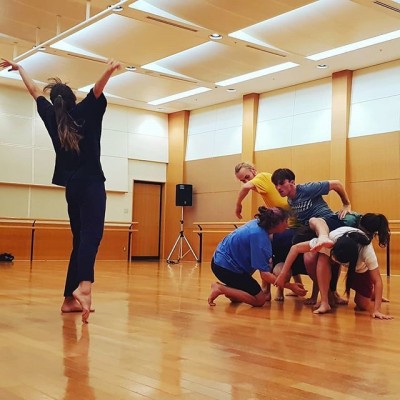
Rehearsals in Oita
We arrived in Japan to prepare for our performances of Annwyl i mi at various places associated with Wales and the Rugby World Cup. Rather than fly everyone back to Cardiff to rehearse some of the Company’s other repertoire for shows in Spain that follow immediately our Japan tour, we avoided the double jetlag and flights by rehearsing in Japan, specifically in Oita, a smaller regional city where we were to perform at the opening of a Wales-Oita visual arts exhibition at OPAM. The advantage of this extended rehearsal in Oita was that we got to establish a working rhythm in the city that helped ground us in Japan. And for me, after the busyness of Hong Kong, Oita was a quiet city to work in.
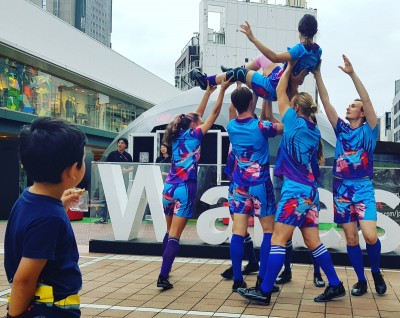
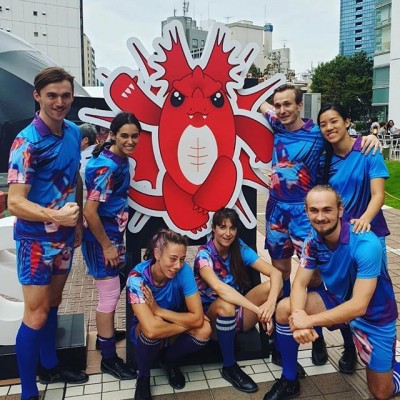
Though we would perform in Oita, our first performances in Japan were to take place at the Wales House Dome in Shinjuku in downtown Tokyo, where the Welsh Government was using the World Cup and the Welsh rugby team’s profile to promote Wales. The Welsh Rugby Union had also embedded itself in Kitatkyushu (a couple of hours north of Oita) where the team’s training camp was based and where a two-year programme of public engagement resulted in the city’s turning red for the World Cup to support Wales. I managed to see the Welsh team in training in the stadium in Kitakyushu and brought back to our rehearsals the connections that I saw between their work and ours.
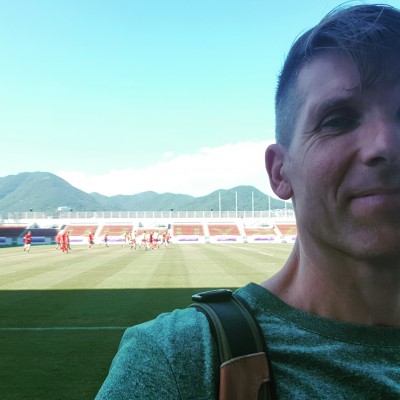
Wales team training in Kitakyushu
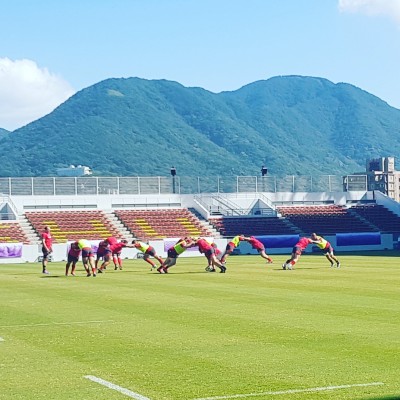
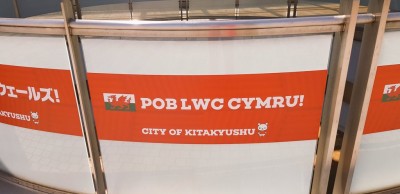
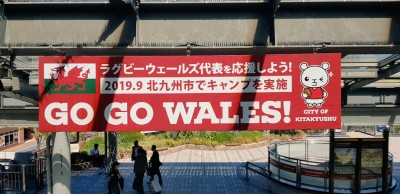
Our rehearsals of Annwyl i mi in Oita were focused on bringing Mat into the team to replace Folu who wasn’t available to dance for this tour. Mat had been part of the R&D that I’d done with the Company at various points in the past year, so he had a sense of the background of how I was working with the dancers and what was at the heart of the work. I was pleased nonetheless that we were expanding the team. I always wanted it to be permeable – a structure that was strong but also flexible, adaptive and inclusive.


We had to draw heavily on our flexibility and adaptability in preparing for our performances in Shinjuku. Our original performance location was changed to another of different dimensions which for bureaucratic reasons initially and then because of typhoon warnings meant our scheduled performances were cancelled. Undeterred we found ways to bring some of the material to Shinjuku and to improvise the piece across an afternoon in Tokyo.

The strength of Carl’s costume designs was evident as we travelled across the city, signalling our connection in the busy city. Seeing how the dancers could respond to the changes that were necessary confirmed that we’d done the right kind of work in preparing the piece, building flexibility in to it, practising adaptability and also maintaining the structure that allows for the change. That clear structure and support is fundamental to achieving spontaneity and freedom to respond.
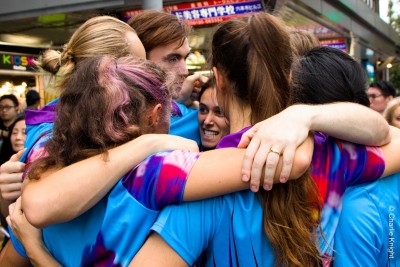
Photo by Charlie Knight
Our return to Oita for the performances there was a return to familiarity. In the few days I’d been away the city’s preparation to welcome rugby fans to the stadium had ramped up even more. I brought into the studio a number of the images of rugby that were prominent in the city. I wanted the dancers to keep refreshing their own image store of what rugby could look like, while also reminding us that the people’s physicality is shaped not only by what they do, but also by what they see. Images suggest what’s possible.
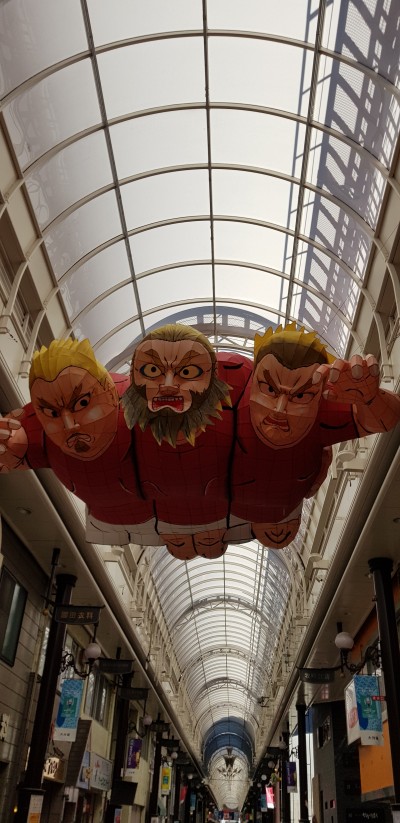
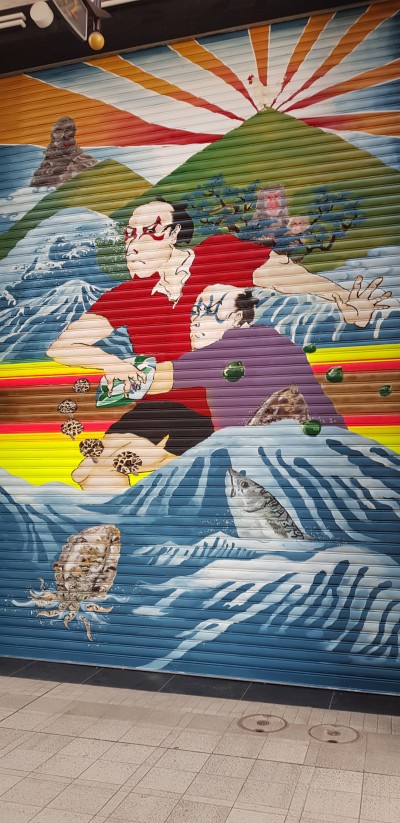
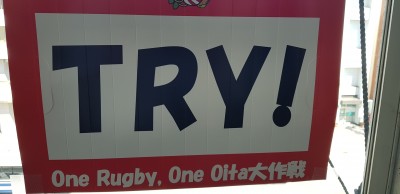
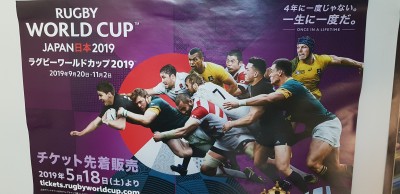
Our hosts in Oita invited the Company to see a recently opened exhibition of Japanese prints and I was struck by the exaggerated facial expressions and contorted body positions of the Kabuki actors depicted in a number of the prints. In one of the sections of Annwyl i mi I’ve encouraged the dancers to extend the pressure and resistance in their limbs into their faces also and the Kabuki-like results are not to suggest that I intended them to be like Kabuki actors but that, being in Japan, we can accumulate their influence, let it pass through the piece as we perform in Japan, so that the piece stays open, receptive and alive.
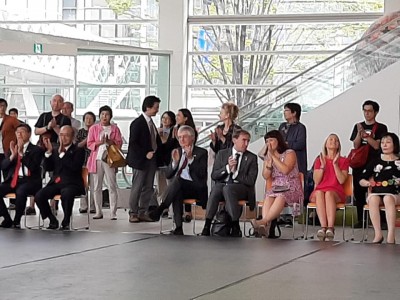
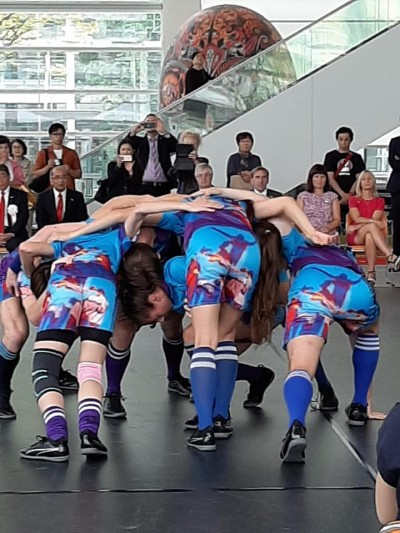
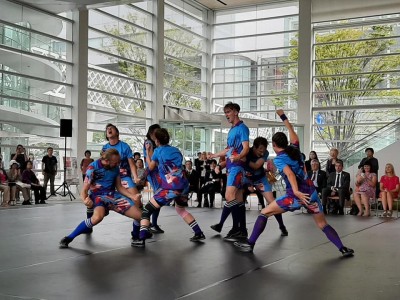
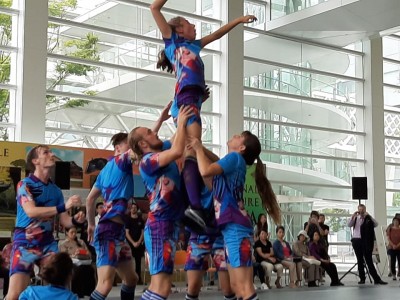
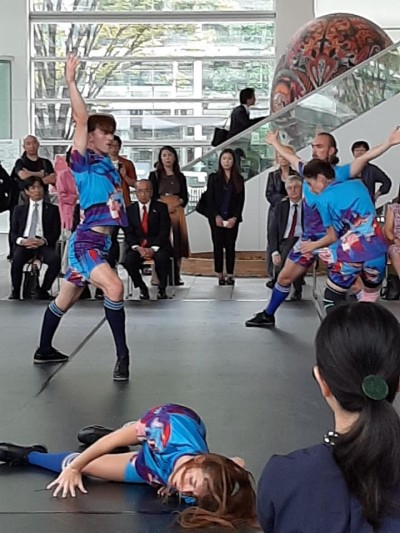
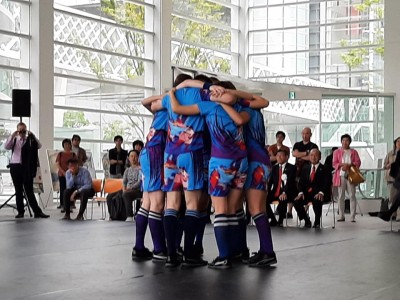
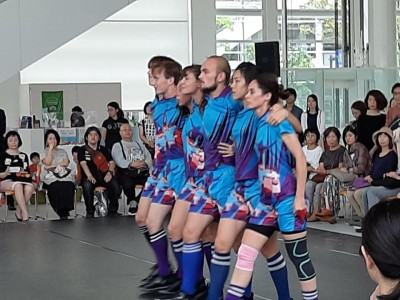
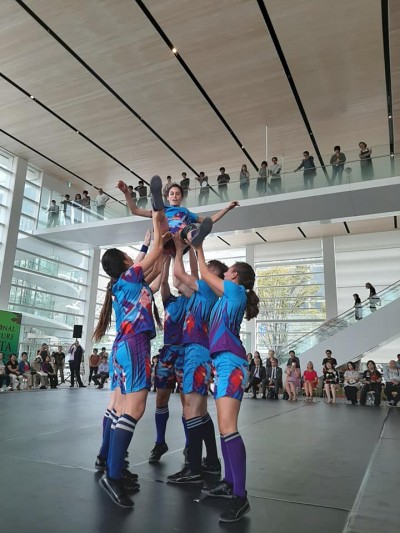
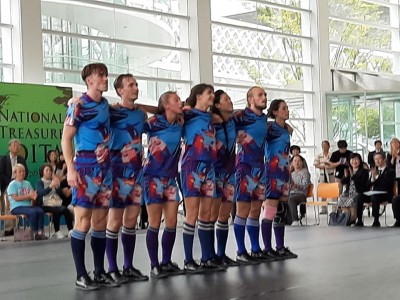
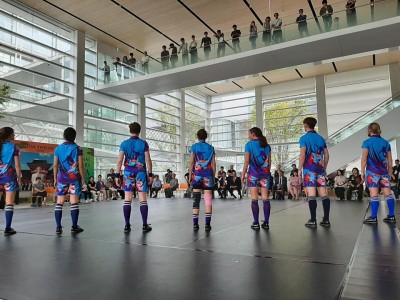
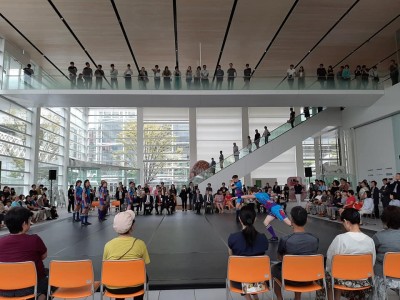
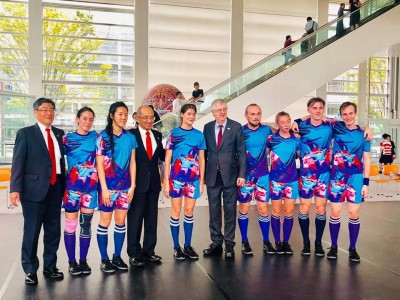
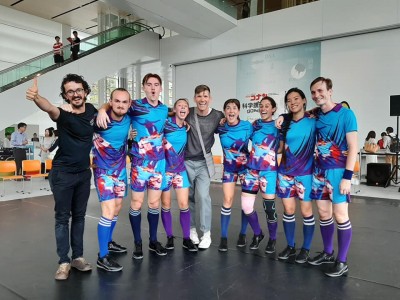 In Oita we performed in the light-filled, airy atrium, with the First Minister of Wales, Mark Drakeford, and the Mayor and Governor of Oita in attendance, along with a large audience. The piece looked wonderful in the generous space and it was fun to add the dignitaries to our line. The line of support has stayed with me from The Casement Project. In The Casement Project that line was mobile and linked. I’ve tried to bring a similar fluidity and support to the line I’ve created in this Rygbi world. It’s a line of solidarity I’d like to see increase, and to remain inclusive of possibilities for transformation. That support for transformation and development is an aspiration I want to keep building in my work. There was a certain amount of protocol to navigate in making our performance happen in Oita but the official response was very positive and it reminded me that the work, the dance, is what matters. Getting all the protocol right wouldn’t have had half as much value without a compelling and engaging performance. The performance was what changed something, brought people together, generated connection. It’s not by accident that culture is a vehicle for diplomacy but that can only be of use, if the intrinsic value of the art is cherished, supported and facilitated. Let the work do the work.
In Oita we performed in the light-filled, airy atrium, with the First Minister of Wales, Mark Drakeford, and the Mayor and Governor of Oita in attendance, along with a large audience. The piece looked wonderful in the generous space and it was fun to add the dignitaries to our line. The line of support has stayed with me from The Casement Project. In The Casement Project that line was mobile and linked. I’ve tried to bring a similar fluidity and support to the line I’ve created in this Rygbi world. It’s a line of solidarity I’d like to see increase, and to remain inclusive of possibilities for transformation. That support for transformation and development is an aspiration I want to keep building in my work. There was a certain amount of protocol to navigate in making our performance happen in Oita but the official response was very positive and it reminded me that the work, the dance, is what matters. Getting all the protocol right wouldn’t have had half as much value without a compelling and engaging performance. The performance was what changed something, brought people together, generated connection. It’s not by accident that culture is a vehicle for diplomacy but that can only be of use, if the intrinsic value of the art is cherished, supported and facilitated. Let the work do the work.
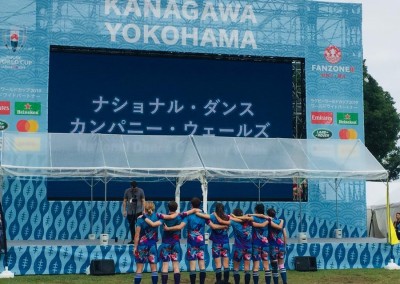 Our final performance was in the Fanzone at Yokohama, back on the grass in the open air and I loved seeing the dancers embrace, surrender to and dance with environment. Sky, ground, water all add energy to the piece that the dancers have learned to harness. In my introduction to the performance, I mentioned again that:
Our final performance was in the Fanzone at Yokohama, back on the grass in the open air and I loved seeing the dancers embrace, surrender to and dance with environment. Sky, ground, water all add energy to the piece that the dancers have learned to harness. In my introduction to the performance, I mentioned again that:
And at the very end of our Japan tour, I got to perform myself. I had considered dancing in the piece before I started making it in July -knowing I’d add some age diversity to the cast! But in that process, I found my role as support for the building the dancers’ readiness to give the work. In Yokohama we were asked to do a second performance before the Wales-Australia match but the organisers couldn’t provide the space on the ground that they had for our performance earlier in the day. So I agreed to dance a five-minute improvisation on a 3 x 12m carpeted stage space in front of the big screen and asked Faye, one of the dancers who wasn’t just about to fly to Spain, to join me. I introduced the improvisation as a five-minute taste of the piece, and for me it was also a distillation of our experience in Japan. It passed in a flash but it was special for me to get to express in some small way something of the energy I’ve taken from watching the dancers perform my work. The work started with me and is now passed on to and through many other bodies. It’s good to acknowledge the resonances of those other bodies in mine and be nourished for whatever comes next.
